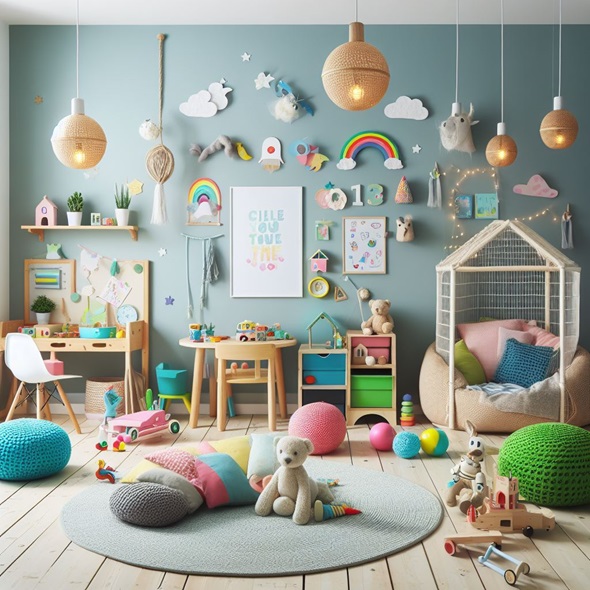
Designing a room for children is an exhilarating challenge that combines creativity, playfulness, and practicality. A kid-friendly room should be a space where children feel comfortable, safe, and inspired to explore, learn, and play. Whether you’re designing a bedroom, playroom, or a dedicated corner in your living area, here are some ideas to help you create a room that will delight and serve your kids well.
1. Start with a Flexible Layout
Children grow and their needs change rapidly, so flexibility should be a key consideration in your design. Opt for furniture that can adapt to different ages and activities. Convertible cots that become toddler beds, adjustable-height tables, and modular storage units can grow with your child, providing lasting value and utility.
2. Emphasise Safety and Comfort
Safety is paramount in any kid’s room. Choose non-toxic, durable materials, and ensure furniture is sturdy and rounded at the edges to prevent injuries. Soft rugs, ample cushioning, and the absence of sharp corners contribute to a safer environment. Also, make sure the room is well-lit with layers of lighting to accommodate various activities, from reading and crafting to gentle night lights that soothe at bedtime.
3. Incorporate Playful and Educational Elements
A kid-friendly room should stimulate creativity and learning. Include elements that encourage play, such as a small tent or a chalkboard wall where they can draw and write. Shelves within reach can display an array of books, fostering an early love for reading. Consider areas designed for specific activities, like a craft corner, a reading nook, or a small climbing wall, to engage their bodies and minds. Growing up, we didn’t have a specific playroom; however, I do have a fond memory of our play largely revolving around building with Lego. I think it was a great way to foster our creativity 🙂
4. Choose Themes That Inspire
Decorating with a theme can turn a simple room into a magical world for children. Whether it’s space exploration, underwater adventures, or a jungle safari, themes can spark imagination and make their room a beloved retreat. However, to ensure longevity, use themes in easily changeable decor elements like bedding, wall decals, and art, rather than permanent fixtures or expensive furniture.
5. Prioritise Storage Solutions
A well-organised room is more inviting and functional. Incorporate plenty of storage options to keep toys, clothes, and books in order. Open bins and baskets are great for younger kids who can easily access and put away toys. As they grow, introduce more structured storage solutions like drawers and shelves to teach organisation skills.
6. Create Zones for Different Activities
Designating specific areas for sleep, play, and study can help children understand and manage their routines better. A cosy bed area, a well-equipped play zone, and a quiet study space can coexist harmoniously with thoughtful planning. These zones can help in structuring the day, especially for older children who have schoolwork to balance with leisure time.
7. Involve Your Child in the Design Process
Incorporating your child’s preferences and ideas can make the room truly special for them. Whether it’s picking out colours, themes, or deciding which toys to display, involving them in the design process ensures the space reflects their personality and interests. This not only gives them a sense of ownership but also makes them more likely to enjoy and take care of their room.
Conclusion
Designing a kid-friendly room is about creating a balance between fun and function. By focusing on safety, flexibility, and spaces that inspire creativity and learning, you can craft a room that meets the needs of your child today while also growing with them. Remember, the most successful kid-friendly spaces are those that reflect the unique character and interests of the child, making them feel valued and happy in their personal haven.
If you are able to create a kid friendly room yourself that’s great or if you’d prefer to get someone else to do it for you, you can post your job on Tradesmen.ie and get up to 4 quotes from Rated Tradesmen:-)
Cheers
Oliver Dempsey
Tradesmen.ie
25 February 2024
General Tips for hiring a tradesman
Here are some tips to consider when hiring a tradesman:-
1. Ask for phone numbers of references so that you can check them out
2. Check insurance of the tradesman where insurance is required
3. Hire a suitably qualified architect, building surveyor or building engineer if the job is anything to do with a new build, building renovation or extension
4. Agree on some sort of stage payments for the job. Remember that full payment should not be made until the job is complete and has been inspected by you, and if necessary by a certifier.






